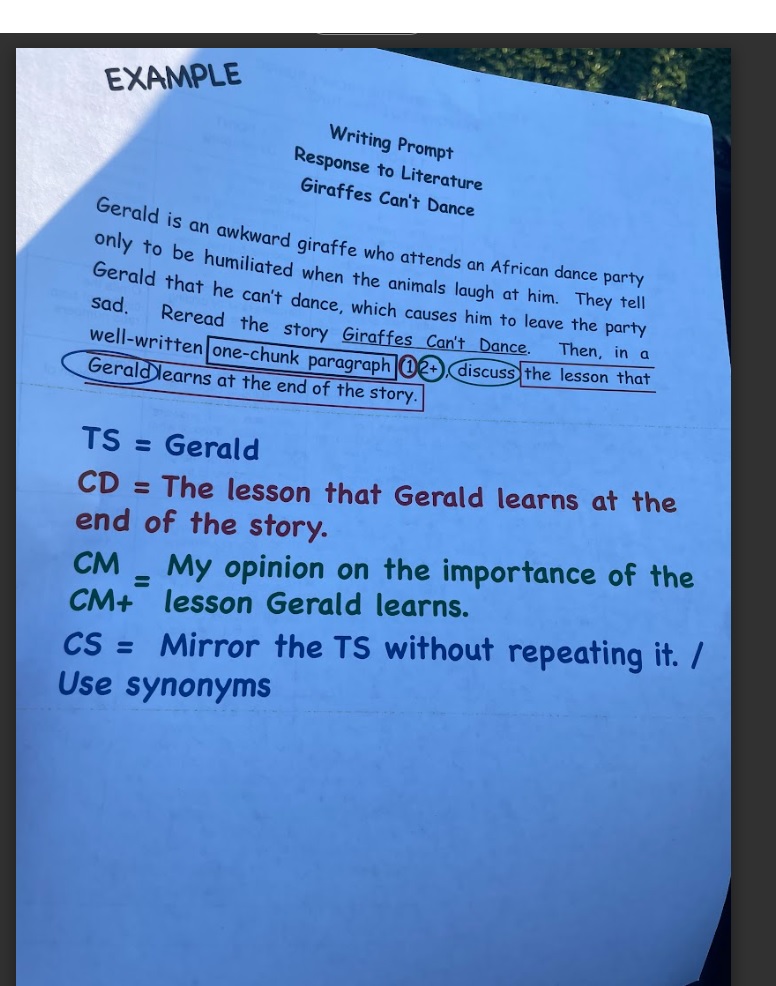The Best Test
Dear Dr. Louis,
When teaching summary or text-based, other than modeling, how do we help students select the best CDs from a chapter or article that is summarized? In my experience, students have difficulty picking the most important details to include in a summary. When can we expect students to do this independently? Any tips?
Thank you,
Stephanie N.
Dear Stephanie,
Well, this skill is one that demands close reading, so reading comprehension is critical at the beginning -- also, putting a value on the prompt. Teachers need to learn to design effective prompts that guide the students to know what to look for ("the most important details"). Thirdly, discerning evidence is a developed skill; and to master it, the students must practice this skill in each content area.
I also like to teach students what I call "THE BEST TEST" for determining relevant, specific, and appropriate evidence (concrete details):
Text-Based
a. Read and decode the prompt first.
b. As you read the text, underline in red the CDs that you think BEST fit the prompt or list them on the "Dialectical Journal" (aka "Detective Journal for Elementary).
Limit selection to only 3-5 words in a row at a time. Find the words and phrases that pop.
c. After you list the CDs on the "Gathering CDs" graphic organizer, use the process of elimination by asking, "Does this CD really fit the prompt?" Is it one of the BEST?
d. When you narrow the list to the ones that BEST fit the prompt, the next step is to ask yourself, "Which of these do I understand the BEST or have the most knowledge about or have the most opinion about?" Circle one or more of these.
e. If you feel comfortable writing on all of the ones you listed originally, then ask yourself, "Which of these would separate me from my classmates? In other words, my classmates will most likely choose this one because it's the easiest. I'm going to choose a different one to stand out as taking a different approach, a different angle. I want to answer with the BEST choice, not the easiest choice."
Summary or Paraphrasing
a. Separate your text into 3-5 parts, depending on the length. An odd number is BEST.
b. For 3
i. Beginning
ii. Middle
iii. End
c. For 5 (longer passages)
i. Beginning (1)
ii. Beginning (2)
iii. Middle (1)
iv. Middle (2)
v. End
d. Beginning -- Who was there? Where were they? And what happened? Facts only. No Commentary.
e. Then go to the Ending -- Who was there? Where were they? And what happened? Facts only. No Commentary.
f. Now, go to the Middle -- Ask yourself, "What happened in the middle that changed the course of this story or article?" Could be an issue, a conflict, a dilemma -- what we call the Exciting Force in Freytag's Pyramid. Find the BEST part of the middle here there appeared a situation, a shift, a climax.
g. Try to limit your summary to 3-5 sentences. Then, you'll have to make good choices. Those are the CDs that are the most important.
Of course, when we have more time, a two-day workshop in person, for example, we would be able to hone in on the specifics of each mode, including skills such as this one.
To answer your question about “when can we expect students to do this independently?” Each student is different, and the answer depends upon how much practice they have. Even secondary students struggle with this skill when they do not have teachers’ modeling the skill, collaborating with the students on the skill, paired work, and independent practice. So, that’s a tough one for me to answer because there are too many variables. Formative assessments will help your teachers see each student’s progress. Summative assessments will assist you as you determine PD ideas to increase mastery on a skill such as this.
Hope this helps, Stephanie!
Keep reading and writing!
Dr. Louis





